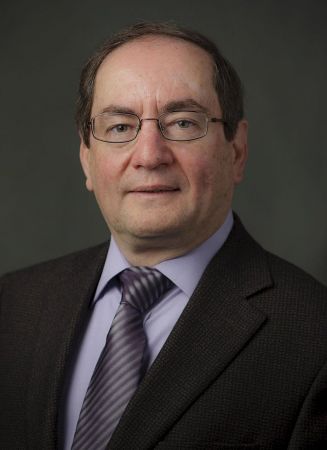In a career spanning three decades, Wachs has earned international renown for research into fundamental and applied aspects of heterogeneous catalysis.
His research focuses on the catalysis science of mixed metal oxides (supported metal oxides, bulk metal oxides, polyoxometalates, zeolites and molecular sieves) for numerous catalytic applications (selective oxidation for manufacture of value-added chemicals, environmental catalysis (selective catalytic reduction of NOx with ammonia), hydrocarbon conversion by solid acid catalysts for increased fuel energy content, oxidative coupling of methane to ethylene and ethane, ethylene oxidation to ethylene oxide, dimerization of ethylene to butene, olefin polymerization, olefin metathesis for on demand production of scarce propylene, conversion of methane to liquid aromatic fuels, biomass pyrolysis, water-gas shift for production of hydrogen, photocatalytic splitting of water to clean hydrogen and electrocatalysis.
The research aims to identify the catalytic active sites present on the heterogeneous catalyst surface to allow establishment of fundamental structure-activity/selectivity relationships that will guide the rational design of advanced catalysts. The research approach taken by the Wachs group is to simultaneously monitor the surface of the catalyst with spectroscopy under reaction conditions and online analysis of reactant conversion and product selectivity with online GC/mass spectrometer analysis. This new methodology has been termed operando spectroscopy and is allowing for the unprecedented development of molecular level structure-activity/selectivity relationships for catalysts. The spectroscopic techniques employed by the Wachs group for determination of the catalytic active sites and surface reaction intermediates are Raman, infrared (IR), ultra violet- visible (UV-vis), Near Atmospheric Pressure - X-ray Photoelectron Spectroscopy (NAP-XPS), High Sensitivity - Low Energy Ion Scattering (HS-LEIS), X-ray Absorption Spectroscopy (XANES/EXAFS), Nuclear Magnetic Resonance (NMR), Electron Paramagnetic Resonance (EPR), environmental transmission electron microscopy (STEM), Temperature Programmed Surface Reaction (TPSR) and Modulation Excitation Spectroscopy (MES). Isotopic labeling of Deuterium, Oxygen-18 and Carbon-13 is also used to track reaction pathways, determine rate-determining steps and distinguish between spectator species and actual surface reaction intermediates.
The U.S. Environmental Protection Agency has honored Wachs with a Clean Air Excellence award for a catalytic process he invented that converts paper-mill pollutants into value-added formaldehyde. The American Chemical Society (ACS) has given Wachs the George A. Olah Award for achievements in hydrocarbon and petroleum chemistry and the American Institute of Chemical Engineering (AIChE) has honored Wachs with the Catalysis and Reaction Engineering Division Practice Award and R.H. Wilhelm Award in Chemical Reaction Engineering. He is the recipient of multiple awards from local catalysis societies (Michigan, New York, Chicago and Philadelphia). In 2011, he was named a Fellow of the American Chemical Society (ACS), the highest honor bestowed by the society. In 2012, he was recognized by the German Alexander von Humboldt Foundation with a Humboldt Research Award and the Vanadis award from the International Vanadium Chemistry Organization. More recently, he has been honored with the Lee Hsun Research Award in Materials Science, Institute Metal Research, Chinese Academy of Sciences (2015), Google Scholar ISI Golden 100 (2019) elected as a Fellow of the National Academy of Inventors (2019). Wachs has published more than 300 highly cited technical articles (cited more than 45,000 times with a H index of 125) and holds more than three dozen U.S. patents. Additional details about the Wachs group activities (publications, presentations, awards, etc.) can be found on the group site (lehigh.edu/operando).
Related News

